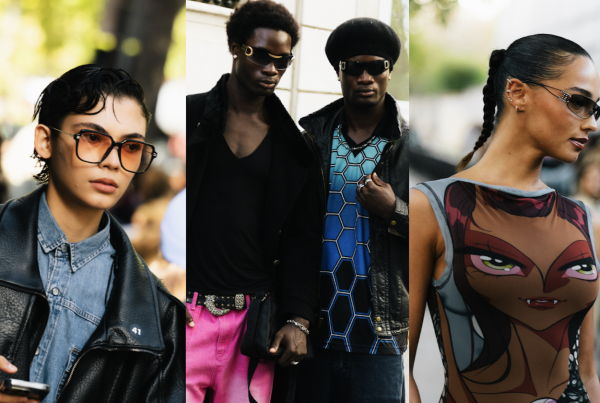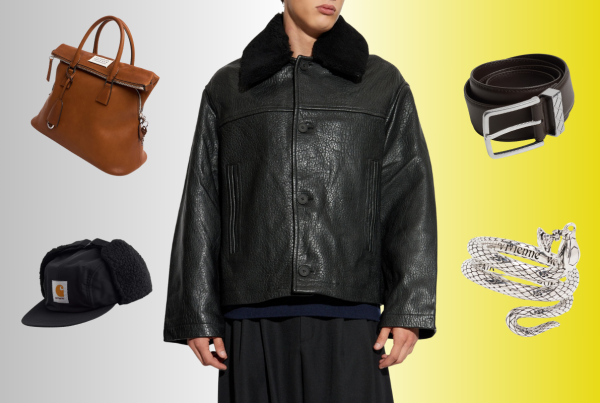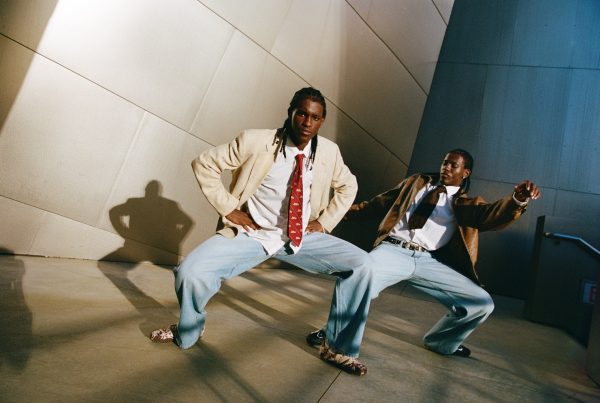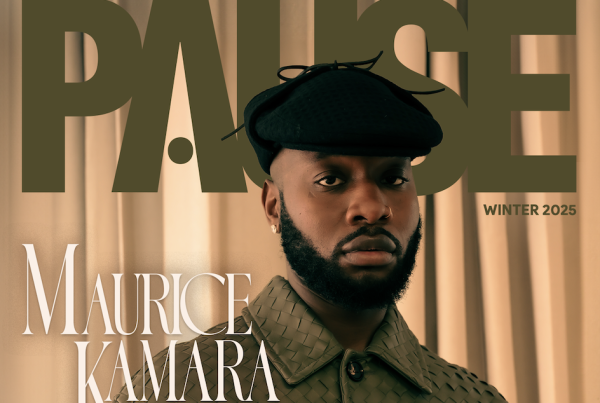PAUSE MEETS:
Karl Kani
A talk with the legendary designer.
Interview: Sonia Akther// @__sosonia
Photographer: Olu HD Photography // @olu_HD
Featuring: Karl Kani // @KarlKani
“I wanna bring back your brand. I wanna be like Biggie and Tupac.”
– Quavo, Migos
In a decade defined by streetwear and its breakthrough into the luxury fashion market, Karl Kani is the Godfather. Paving the way for Sean John, Phat Farm and FUBU, a google search for 90s hip-hop icons will undoubtedly lead you to an array of images of the legends, all sporting distinct and often oversized attire, with the Karl Kani logo. Signifying a golden era of hip-hop, these cultural benchmarks continue to influence music and fashion today. PAUSE sat down with the man himself.

Streetwear, once a sub-culture, is now firmly entrenched in mainstream fashion. As a pioneer in the industry, what do you think has been the driving forces behind this?
I feel like 90s street culture was such an important time for fashion. It was the first time that the kids from the streets were really able to identify themselves by wearing clothing that they could put together for themselves and by designers that represented the streets as well, and with a fit and cut that they could relate to. So these things were monumental for fashion, and it’s always going to be tried to be replicated again because it can never be done again- it was something so new and exciting.

The Kani logo is synonymous with a golden era of hip-hop history, as an outfitter to so many of the greats, how did that feel for you? And were you aware of your importance on culture at the time?
Yeah, you know, it’s funny you should ask that question. I kind of always just live in the moment so as these things were happening, I was always looking forward to the next thing, the next step, I didn’t really get a chance to take in those iconic moments as they were happening. Thirty years later, now that I look back at it, I realise how important each relationship was. Every moment I had with Tupac, the time Diddy did my first campaign for Source Magazine to when Biggie mentions my name in his songs and all the times he wore my clothing, to the Nas campaign, I mean the list goes on and on and on… and now that I look back at all of that, that’s what makes Karl Kani so iconic, because there’s no other brand who could show you all those top icons wearing one brand. So when we talk about Karl Kani as The Godfather and the originator of streetwear, we say that with a reason because if we don’t take that stake and make that claim, the story can be told very differently.
And I guess it is only with time we are able to see this and tell the history…
Yeah, and to add onto that, that’s one thing money can’t buy… money can’t buy you history, and it can’t buy you a legacy. So it doesn’t matter if you’re a billionaire, there’s still no way you can recreate the 90s and act like your brand was there, it just can’t happen.
I read something about fabric shops on Delancey St, and the tailor-made suits your father would then have made. What were your very first impressions of fashion as a child?
Yeah, so we came to America, and my dad was getting his clothes custom made. He was going out to Delancey to buy his fabrics and bringing it back to his Haitian tailor in Flatbush, who would then make the clothes. As a young boy, I used to watch and see how my dad had all these ideas and got his clothing made. It wasn’t till we moved to the projects in the inner city in Brooklyn where I realised how competitive kids were in terms of fashion like everybody had to have on fresh sneakers, we were broke, but we had to have on fresh clothes.
So, I decided one day that I wanna be different than these kids and started making my own clothes with my dad’s tailor, and ultimately, that’s how streetwear started- by me making myself custom made clothing and my friends paying compliments on my clothing. And when they asked me where I got it from, well, when you’re from the streets, you don’t give up your secrets, so I said: “well, I’ll make you an outfit, I’m not gonna just tell you where my tailor is”. So it’s from there that I started making my outfits for my friends, and that’s kind of how I got my foot in the game of making clothing and establishing my brand.
In some ways, a similar story to another young New Yorker, Ralph Lauren, who didn’t necessarily sew but had style and acumen…
Yeah, it’s that New York mentality you know, they say if you can make it here, you can make it anywhere. New York is a very hustle-bustle, make-it-happen type of vibe, so living there, you gotta make things happen – and that’s what we did with fashion.

What do you think the advantages and challenges are for upcoming designers today?
The challenges are that there is a lot of competition right now and there’s a lot of brands coming up on Instagram and stuff like that, so you’ve got to be really unique to get your brand out there and stand different than everybody else.
The advantages are that you can get your stuff on a certain influencer nowadays and you become a brand almost overnight. If the right person starts wearing your stuff, it hits Instagram and starts to feed onto the channels, and you can find yourself established really quickly. So it can work with or against you, but I think the key today is being different and not looking at what everyone else is doing. If you can stand out and come out with some dope styles that look different to everyone else’s, you may be onto something. I think a lot of designers today copy each-others style and look the same, and that’s why people get into this little rut, but I feel like whoever is different will always stand out.
The brand has had continuing success in Japan, is there a secret to this market?
Accepting the Japanese style and way. I think a lot of brands don’t make it in Japan because you can’t stay here in America and tell Japanese people this is what you want them to wear. Japanese people, they have their own certain type of style, and what we do is implement the Karl Kani vibe with what Japanese kids want, and that’s why it really works for us, and we’ve been doing business in Japan now since 1998.
When the market here started to clean up, the Japanese kids wanted the Rhinestones, they wanted to be loud, they wanted to be bold, and you couldn’t deny them that. The Japanese are very outspoken when it comes to fashion, they’re very trendsetting, so we worked very closely with our Japanese team to hear what the culture wants, and what the kids want, and we design a whole separate line just for the Japanese market.
What was it like working on movies such as All Eyez on Me & Straight Outta Compton? Was there a lot of nostalgia going back into the archives?
Yeah, those really were iconic moments. We were much more involved with the All Eyez on Me movie like we did the whole wardrobe for that. The Tupac character Demetrius wore a Karl Kani outfit in almost every scene because the producer L.T Huttons said: “it won’t be a legitimate movie unless he’s in Karl Kani” because that was all Tupac wore, so you can identify the brand and the image of Tupac. So it was really cool recreating those styles. We had to go back into the crates because my current line is not as baggy as it used to be back then, and it didn’t look like Tupac if the stuff was fitted, because Tupac was always in oversize. So it was really cool going back into the crates, and it actually inspired some of my new collection and bringing back those fits again.
How do you see the relationship between fashion and hip-hop evolving?
I feel that the relationship is getting stronger and stronger. Hip-hop has always been influential in fashion, but every top designer now wants to be street. What’s really ironic about this whole situation is that back in the days when streetwear was starting, most of the top designers didn’t want anything to do with hip-hop. They wouldn’t use them in advertising, and they definitely didn’t want them rocking their clothing. A lot of designers didn’t even want hip-hop artists mentioning their names in songs saying it was misrepresenting their brands. Now, everybody wants to be associated with the Travis Scotts or Kanyes and the Virgils and all these guys. The tables have now turned, and hip-hop is getting stronger and stronger, and things have become more balanced, where it needed to be. So, hip-hop artists need to understand their strengths and their power and take advantage of the whole way this market is going right now because it can switch one day, but as you can see, right now, we got the throne.

How does it feel to see a new generation of millennials embracing the Kani brand now?
It’s the ultimate feeling, you know. Honestly, I thought I was cheating the game when I started bringing back the stuff from the vaults in 2015 because I felt like, ‘man, I did this already, why would anyone want this?!’ I’m always talking about moving forward and moving ahead, but then I realised this generation, this new young generation never experienced this. They just probably see pictures of it, which is probably why it’s so much cooler to them, they don’t know how it felt to be in the 90s, the fit of the clothing, the colours, the bright and boldness of it- this is all new to them, so it makes me feel really good that we were able to recreate that collection and bring it back to the forefront.
And I can tell you; it was also Quavo from Migos, he kinda helped a lot with that. He came to in 2015, he DM’d me saying “Yo, I’m tryna get at you”, so of course it was Quavo, I was like wondering ‘what’s up, like, I wanna get at you too..’ and he’s like “Yo, I wanna bring back your brand. I wanna be like Biggie and Tupac. I wanna bring it back.”
And I felt these artists connect to Biggie and Tupac so hard and the fact that they wore the clothing, they wanna feel like I got the power to bring something back just like they did. And they did an excellent job of doing it because there’s nothing better than having modern-day hip-hop artists that are very influential to start rocking a brand that has heritage to it and that’s why it’s been very successful for us.
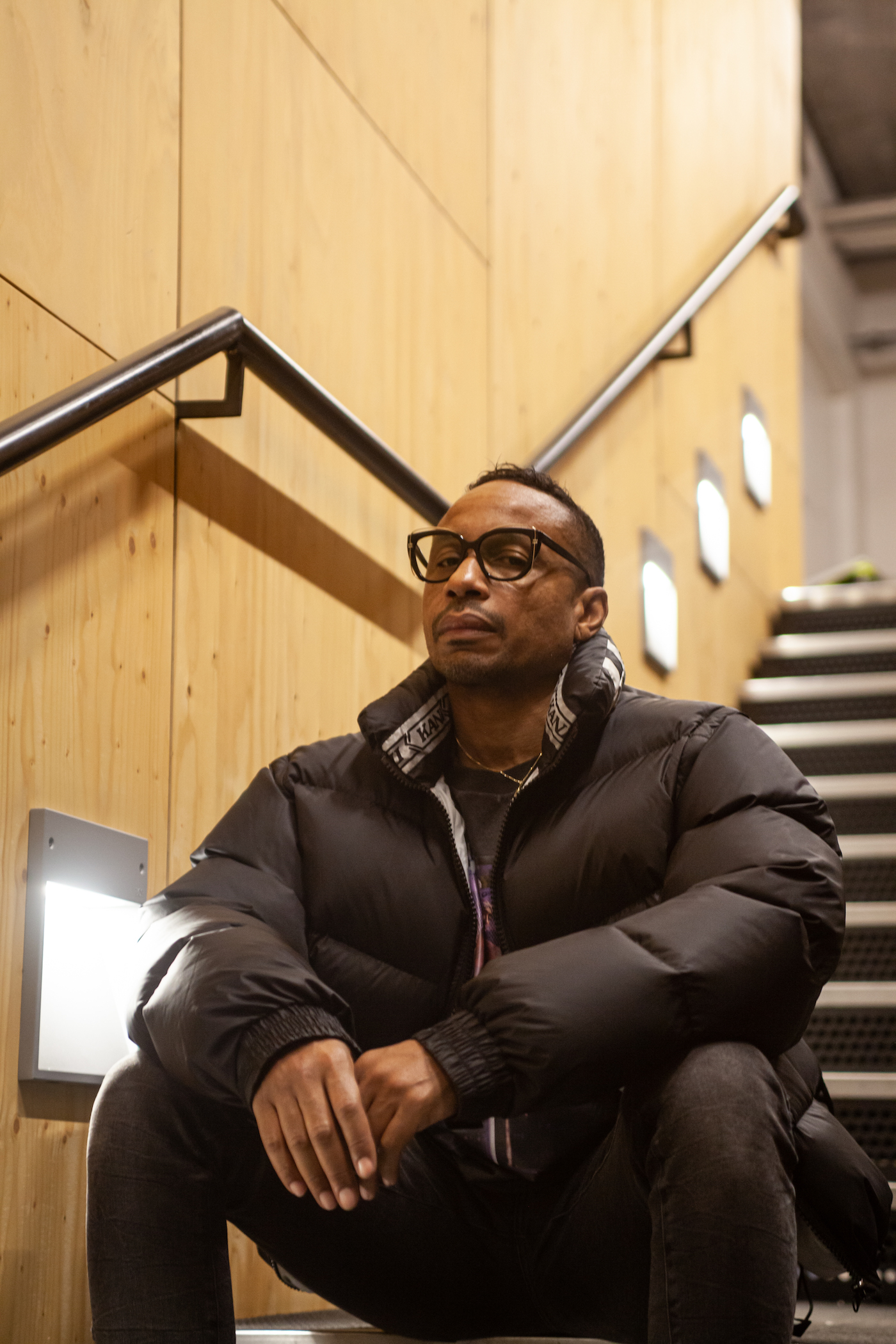
Hedi Slimane dressed men in skinny jeans at Dior, and Alexander McQueen was defined early on by the low rise bumsters. What are your thoughts on the changing cut of denim and its trends?
Everything kinda goes in cycles, and the cycle is changing again right now. People get tired of having the same looks with so many skinny jeans in your closet. And not only that, I take it all back to the young generation. They wanna be different than the generation before them. So the generation before them was ‘skinny-ed’ out. Kids don’t wanna wear what their parents wore you know, they wanna be different, they are going to rebel, and I feel like that’s what’s coming back right now. I don’t necessarily know if it’s gonna get as baggy as it was back then, because we kinda took it to the extreme, you know what I mean, it was new, and I remember how our parents used to complain “oh your clothes are too baggy, pull your pants up” and as kids, what we did was, the more they complained, the baggier the jeans got and the lower they wore them. So when they stopped complaining, the markets cleaned up and went skinny, so we’ll see what happens, but baggy is definitely trending right now.
One of your first creations was denim Lee suit you had your tailor remake from 5 yards of linen- if you could take and remake another garment now, what would it be?
I would remake the overalls. I feel like there’s something to be said about overalls, I think there’s so many iconic pictures of Tupac and Aaliyah rocking overalls, I wanna take a different take on overalls ..that’s actually what we’re working on right now in our new collection. Overalls have always been traditional wear, but we wanna take it and do it in new fabrics, take new twists and bring it back to the market. I feel like that’s such a staple item, when you see someone in overalls it just screams 90s to you so we kinda wanna do that and emulate in a different way.
Follow Karl Kani on Instagram










